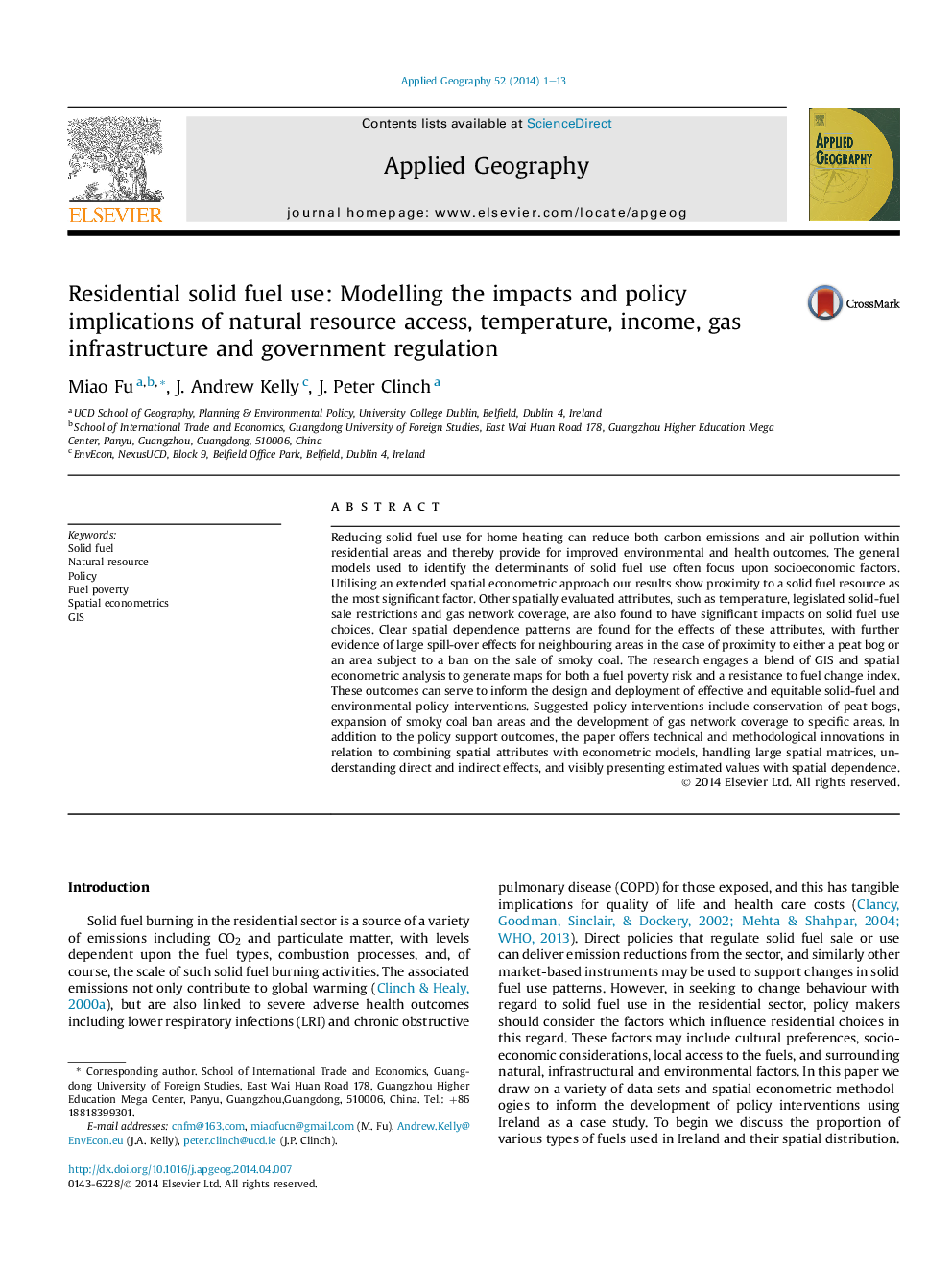| Article ID | Journal | Published Year | Pages | File Type |
|---|---|---|---|---|
| 6538746 | Applied Geography | 2014 | 13 Pages |
Abstract
Reducing solid fuel use for home heating can reduce both carbon emissions and air pollution within residential areas and thereby provide for improved environmental and health outcomes. The general models used to identify the determinants of solid fuel use often focus upon socioeconomic factors. Utilising an extended spatial econometric approach our results show proximity to a solid fuel resource as the most significant factor. Other spatially evaluated attributes, such as temperature, legislated solid-fuel sale restrictions and gas network coverage, are also found to have significant impacts on solid fuel use choices. Clear spatial dependence patterns are found for the effects of these attributes, with further evidence of large spill-over effects for neighbouring areas in the case of proximity to either a peat bog or an area subject to a ban on the sale of smoky coal. The research engages a blend of GIS and spatial econometric analysis to generate maps for both a fuel poverty risk and a resistance to fuel change index. These outcomes can serve to inform the design and deployment of effective and equitable solid-fuel and environmental policy interventions. Suggested policy interventions include conservation of peat bogs, expansion of smoky coal ban areas and the development of gas network coverage to specific areas. In addition to the policy support outcomes, the paper offers technical and methodological innovations in relation to combining spatial attributes with econometric models, handling large spatial matrices, understanding direct and indirect effects, and visibly presenting estimated values with spatial dependence.
Related Topics
Life Sciences
Agricultural and Biological Sciences
Forestry
Authors
Miao Fu, J. Andrew Kelly, J. Peter Clinch,
